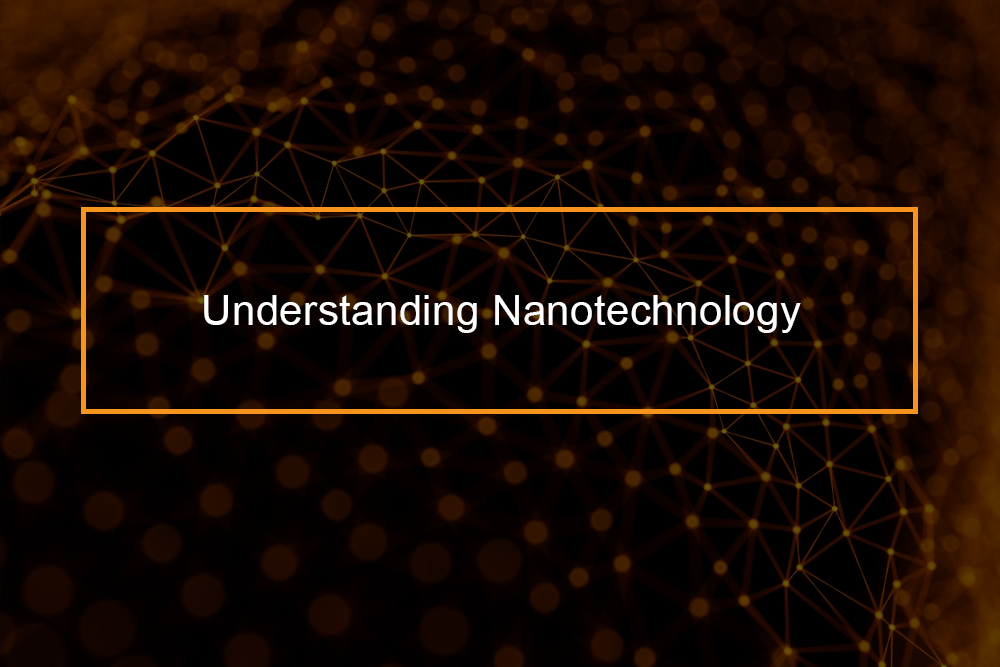
Nanotechnology is known as comprehension and control of matter at the nanoscale, at measurements between around 1 and 100 nanometers, where exceptional wonders empower novel applications. Enveloping nanoscale science, designing, and innovation, nanotechnology includes imaging, estimating, demonstrating, and controlling matter at this length scale.
What is Nanotechnology and its Uses?
What’s the Importance of Nanotechnology?
Nanotechnology is a theme that traverses a scope of science and engineering sectors. It happens at a little scale – more significant than the dimension of iotas and particles, yet inside the range of 1-100 nanometers.
This scale is about a billionth of a meter and things this little can carry on strangely. These surprising physical and compound attributes happen because there is an expansion in surface region contrasted with volume as particles get littler and furthermore because they are liable to quantum impacts. It implies they can act in various ways and don’t pursue similar laws of material science that more significant items do. For more data about quantum and molecular material science see ‘The best things come in little bundles.’
The possibility of nanotechnology previously originated from the physicist Richard Feynman (conceived in 1959) who envisioned the whole. Carbon nanotubes – minor containers of carbon molecules, which are exceptionally solid yet light – began to be made during the 1950s. It was enhancements in microscopy during the 1980s that enabled analysts to see single particles and after that control them on a surface. In 1985 scientific experts found how to make a football formed particle from 60 carbon iotas called buckminsterfullerene.
Uses and Impact Based on Research
The ramifications of nanotechnology are colossal and could incorporate prescription, military applications, registering and stargazing. Nanotechnology is under use as of now in specific materials such as self-cleaning glass, sunscreens, lipsticks, and even antibacterial socks! Future applications for nanotechnology appear to be just to be constrained by the inventiveness of analysts. Nanotechnology might be utilized to convey medications to merely the ideal place inside the body. There are even researchers who imagine that nanofoods could be used to trap the body into feeling fuller for longer, preventing us from overeating. Nanotechnology is a significant new part of science and construction, and there has been an analysis that indicates there might be dangers to people and the condition that we don’t think about yet, for instance, little nanoparticles might be harmful in specific situations.
How Does Nanotechnology Work?
Understanding Nanotechnology
Imagine having shrunk down to approximately 1500 times, in such a way that you would be able to interact with atoms- this is how tiny a nanoparticle is.
Nanoparticles Structure
Nanoparticles, which have been created on a mechanical scale for a long while as of now, are utilized in a broad range of uses and numerous items. There is no basic answer to what they are. The decent variety of manufactured (i.e., human-made) nanoparticles is significant. They are particular in their properties and applications. Besides their size, engineered nanoparticles shift in chemical arrangement, shape, surface attributes and method of creation.
In the system of nanotechnology, the term nano”= alludes only to molecule length. It implies those items that reach out in two measurements from 1 to a few 100 nm are known as nanoparticles. Researchers have created an electron magnifying lens that enables us to “see” things on the nanoscale and furthermore control them. The essence of an electron magnifying lens is to utilize a light emission to see things that are too little to view using a light emission. A nanoscopic magnifying instrument uses electronic and quantum impacts to see things that are much littler. It likewise has a little test on it that can be utilized to move iotas and atoms around and revamp them like minor building squares.
Nanomaterials
It could be you’re as of now utilizing nanotechnology. You may wear nanotechnology pants, strolling on a nanotechnology carpet or sleeping on nanotechnology sheets. Every one of these items is produced using textures covered with “nanowhiskers.” These minor surface strands are small to the point that soil can’t infiltrate into them, which implies the more deep layers of material remain clean. A few brands of sunscreens use nanotechnology also: they coat your skin with a layer of nanoscopic titanium dioxide or zinc oxide that shut out the Sun’s destructive bright beams. Nano-coatings are likewise showing up on scratch-safe vehicle guards, hostile to slip ventures on vans and transports, consumption safe paints, and wound dressings.
Carbon nanotubes are among the most energizing of nanomaterials. These bar molded carbon particles are around one nanometer over. Although they’re empty, their thickly stuffed structure makes them extraordinarily strong, and they can develop into filaments of practically any length. NASA researchers have as of late proposed carbon nanotubes could be utilized to create a tremendous lift extending the distance from Earth into space. Hardware and individuals could be transported gradually here and there this “carbon stepping stool to the stars,” sparing the requirement for expensive rocket flights.
Nanochips
Microelectronics is one type of nanotechnology we are already using. The “smaller scale” some portion of that word recommends PC chips deal with the minute scale—and they do. Also, it’s not merely the chips inside PCs that utilization nanotechnology. The showcases on everything from iPods and cellphones to workstations and flatscreen TVs are moving to natural light-radiating diodes (OLEDs), produced using plastic movies based on the nanoscale.
Nano-machines
A standout amongst the most energizing territories of nanotechnology is the likelihood of building staggeringly little machines—things like apparatuses, switches, siphons, or motors—from individual iotas. Nanomachines could come in the form of nanorobots (in some cases called nanobots) that could be infused into our bodies to do fixes or sent into dangerous or dangerous conditions, maybe to tidy up neglected atomic power plants.
Types of Nanotechnology
Nanotechnology Applications: As Many as 13 Uses
This section of the guide is devoted to giving clear and brief clarifications of nanotechnology applications.
Nanoparticles Medical Use
Analysts are creating modified nanoparticles the span of atoms that can convey sedates specifically to unhealthy cells in your body. At the point when it’s idealized, this strategy ought to enormously diminish the harm treatment, for example, chemotherapy does to a patient’s solid cells.
Nano-tech Reduces Gadget Size and Power Usage
Nanotechnology holds a few responses for how we may build the capacities of hardware gadgets while we diminish their weight and power utilization.
Food Science Development Via Nanotechnology
Nanotechnology is increasingly influencing a few sectors of food science, from growing to packaging. Organizations are creating nanomaterials that will have significant effect in the essence of food, as well as in nourishment safety, and the medical advantages that food conveys.
Hydrogen Particles Maximize Energy Cells Through Nano-tech
Nanotechnology is being utilized to decrease the expense of catalyzers used in energy components to create hydrogen particles from fuel, for example, methanol and to enhance the proficiency of layers used in power modules to isolate hydrogen particles from different gases, for example, oxygen.
Nanotech Solar Cells
Organizations have created nanotech solar cells that can be made at effectively bringing down expenses than regular sunlight based batteries.
Energy Efficient Batteries
Organizations are now creating batteries utilizing nanomaterials. One such battery will be decent as new in the wake of sitting on the rack for a considerable length of time. Another cell can be energized fundamentally quicker than traditional batteries.
Fuel Efficiency in Space Rockets
Nanotechnology may hold the way to making space-flight progressively reasonable. Headways in nanomaterials make lightweight shuttle and a link for the space lift conceivable. By fundamentally diminishing the measure of rocket fuel required, these advances could bring down the expense of achieving circle and going in space.
Alternative to Non-Renewable Energy Sources
Nanotechnology can address the deficiency of non-renewable energy sources, for example, diesel and gas by making the creation of fills from second-rate crude materials practical, expanding the mileage of motors, and creating the generation of energizes from conventional crude materials increasingly proficient.
Nanotech Uses Catalyst to Purify Fumes
Nanotechnology can enhance the execution of catalyst used to change air getting away from vehicles or modern plants into safe gasses. That is because catalysts produced using nanoparticles have a more noteworthy surface territory to associate with the responding synthetic substances than accelerators produced using bigger particles. The more prominent surface region enables more synthetic materials to interface with the catalyst at the same time, which makes it increasingly viable.
Nanoparticles Clean Polluted Underground Water
Nanotechnology is being utilized to create answers for three altogether different issues in water quality. One test is the evacuation of mechanical squanders, for example, a cleaning dissolvable called TCE, from groundwater. Nanoparticles can be utilized to change over the polluting substance through a synthetic response to make it safe. Studies have demonstrated that this strategy can be used effectively to reach pollutes scattered in underground lakes and at a much lower cost than techniques which require siphoning the water out of the ground for treatment.
Nano-based Chemical Sensors
Nanotechnology can empower sensors to identify small measures of substance vapors. Different sorts of distinguishing components, for example, carbon nanotubes, zinc oxide nanowires or palladium nanoparticles can be utilized in nanotechnology-based sensors. As a result of the little size of nanotubes, nanowires, or nanoparticles, a couple of gas atoms are adequate to change the electrical properties of the detecting components. It permits the identification of a low centralization of substance vapors.
Nanotech Increases Quality of Sport Items
In case you’re a golf enthusiast, you’ll be happy to hear that the nanoworld has invaded the sporting sector too. Current nanotechnology applications in the games field incorporate expanding the quality of tennis racquets, filling any flaws in club shaft materials and decreasing the rate at which air spills from tennis balls.
Improved Fabric Quality Through Nano-sized Elements
Making a texture blend with nano-sized particles or strands permits enhancement of texture properties without a noteworthy increment in weight, thickness, or solidness as might have been the situation with already utilized systems.
Applications of Nanotechnology
Variety of Nanotechnology Applications
In this section of the guide is a rundown of applications of nanotechnology.
Nanotechnology Daily Applications
How is Nanotechnology Used in Everyday Applications?
Nanoscale-based Elements Protect the Skin
- Nanoscale added substances or surface medications of textures can give lightweight ballistic energy divergence in protective body layer or can enable them to limit wrinkling, recoloring, and bacterial development.
Clear Nanoscale Films Protect Display Screens
- Clear nanoscale films on PC, eyeglasses, and camera screens, windows, and different surfaces can make them water-and buildup repellent, anti-reflective, self-cleaning, impervious to bright or infrared light, anti-fog, antimicrobial, scratch-safe, or electrically conductive.
Nanoscale sensors and hardware
- Nanoscale materials are starting to allow launderable, sturdy “shrewd textures” furnished with adaptable nanoscale sensors and hardware with capacities for safety observing and energy reaping through development.
Nanoscale Added Substances in Polymer Composite Materials
- Lightweighting of autos, trucks, planes, and spacecraft could prompt huge fuel investment funds. Nanoscale added substances in polymer composite materials are being utilized in tennis rackets, bikes, protective cruiser caps, vehicle parts, gear, and power device lodgings, making them lightweight, firm, sturdy, and durable. Carbon nanotube sheets are presently available for use in cutting-edge air vehicles. For instance, the blend of lightweight and conductivity makes them perfect for applications, for example, electromagnetic protecting and warm administration.
Nano-bioengineering of Compounds
- Nano-bioengineering of compounds intends to empower change of cellulose from wood chips, corn stalks into ethanol for fuel. Cellulosic nanomaterials have shown potential applications in an extensive exhibit of mechanical parts, including gadgets, development, bundling, sustenance, vitality, medical services, car, and safeguard.
Cellulose Nanomaterials are Budget Friendly
- There’s anticipation that Cellulosic nanomaterials are more affordable than many different nanomaterials.
Nano-designed materials in car items
- Nano-designed materials in car items incorporate high-control battery-powered battery frameworks; thermoelectric elements for temperature control; tires with lower moving obstruction; high-proficiency/ease sensors and hardware; thin-film brilliant sun oriented boards; and fuel added substances for cleaner fumes and expanded range.
Nanostructured Heated Coatings
- Nanostructured heated coatings display a lot more remarkable strength than conventional wear-safe coatings for machine parts. Nanotechnology-empowered ointments and motor oils additionally fundamentally limit mileage, which can substantially broaden the lifetimes of moving parts in everything from power devices to mechanical apparatus.
Nanoparticles are Used in Catalyzers
- Nanoparticles are utilized progressively in catalysis to support compound responses. It lessens the number of synergist materials necessary to create wanted outcomes, setting aside some cash and decreasing toxins. Two major applications are in oil refining and in-car exhaust systems.
Nano-built materials Part of Daily Family Products
- Nano-built materials make everyday family items, for example, degreasers and stain removers; natural sensors, air purifiers, and channels; antibacterial chemicals; and specific paints and fixing issues, such a self-cleaning house paints that oppose earth and stamps.
How is Nanotech Used in Electronics?
Application of Nanotechnology in Electronics field
Nano-Based Transistors
- Transistors, the key switches that empower all cutting edge figuring, have gotten littler and littler through nanotechnology. When the new century rolled over, a run of the mill transistor was 130 to 250 nanometers in size. In 2014, Intel made a 14-nanometer transistor, at that point, IBM created the first seven-nanometer transistor in 2015, and after that Lawrence Berkeley National Lab exhibited a one-nanometer transistor in 2016! Smaller, quicker, and better conductors may imply that soon your PC’s entire memory might be put away on a separate minor chip.
Magnetic RAM Draws Power from Nanometer‐Scale Elements
- Utilizing beautiful Magnetic RAM (MRAM), PCs will have the capacity to “boot” in a split second. MRAM draws power from nanometer‐scale attractive passage intersections and can rapidly and viably spare information amid a framework shutdown or empower resume‐play highlights.
Nanotechnology Used in Flash memory chip
- Other registering and electronic items incorporate Flash memory chips for advanced cells and thumb drives; ultra-responsive portable amplifiers; antimicrobial/antibacterial coatings on consoles and phone housings; conductive inks for printed gadgets for RFID/smart cards; and adaptable showcases for digital book browsers.
Energy Application
Nanotechnology Enhancing Proficiency of Fuel Creation
- Nanotechnology is enhancing the proficiency of fuel creation from crude oil materials through better catalysis. It is additionally empowering diminished fuel utilization in vehicles and power plants through higher-effectiveness burning and reduced contact.
Nanotechnology Links to oil and gas extraction
- Nanotechnology is likewise being connected to oil and gas extraction through, for instance, the utilization of nanotechnology-empowered gas lift valves in offshore activities or the usage of nanoparticles to identify minute down-well oil pipeline breaks.
Carbon Nanotube
- Specialists are examining carbon nanotube “scrubbers” and films to isolate carbon dioxide from power plant debilitate.
Nanoparticles in Solar Cells Makes Them Light
- New sun based board films join nanoparticles to make lightweight, adaptable sun oriented cells.
Lower Resistance Carbon Nanotubes
- Scientists are creating wires containing carbon nanotubes that will have much lower resistance than the high-strain wires presently utilized in the electric network, in this way diminishing transmission control misfortune.
Nanotechnology Links to Sun Based Boards
- Nanotechnology can be joined into sun based boards to change over daylight to power all the more effectively, encouraging cheap sunlight-based energy later on.
Nanotechnology in Medicine
How Is Nanotechnology Influencing Medicine?
Nanotechnology has many benefits that it brings to the medical sector, and we’ve gathered a list of some of these below:
Development of Nanomedicine
- Nanotechnology is as of now widening the medical instruments, learning, and treatments presently accessible to doctors. Nanomedicine, the use of nanotechnology in medication, draws on the average size of natural wonders to create exact answers for malady counteractive action, analysis, and treatment. The following are a few instances of late advances around there:
Applications of Gold Nanoparticles in Future Medicine
- Business applications have adjusted gold nanoparticles as tests for the location of focused groupings of nucleic acids, and gold nanoparticles are likewise under examination as potential medications for malignancy and different infections.
Nanotech empowered Tools for Better Imaging
- Better imaging and symptomatic apparatuses empowered by nanotechnology are making ready for the prior conclusion, increasingly individualized treatment alternatives, and better medical achievement rates.
Analysis and Treatment of Atherosclerosis Via Nanotechnology
- Nanotechnology is under examination for both the conclusion and treatment of atherosclerosis or the development of plaque in conduits. In one method, specialists made a nanoparticle that copies the body’s “great” cholesterol, known as HDL (high-density lipoprotein), which contracts plaque.
Nanopore Materials for Structure and Building
- The structure and building of cutting-edge strong state nanopore materials could consider the advancement of novel quality sequencing innovations that empower single-atom discovery requiring little to no effort and rapid with insignificant example arrangement and instrumentation.
Better Analysis of Cancer Cells by Nanotechnologists
Nanotechnology analysts are taking a shot at various distinctive therapeutics where a nanoparticle can embody or generally help to convey medicine specifically to malignant growth cells and limit the danger of harm to sound tissue. It can change the manner in which specialists treat cancerous growth and drastically lessen the harmful impacts of chemotherapy.
Use of Nanotechnology in Regenerative Medication
- Research in the utilization of nanotechnology for regenerative medication traverses a few application territories, including bone and neural tissue designing. For example, novel materials can be built to emulate the precious stone mineral structure of human bone or utilized as a medical sap for dental applications. Specialists are searching for approaches to developing complex tissues with the objective of one day developing human organs for transplant. Analysts are likewise considering approaches to utilize graphene nanoribbons to help fix spinal string wounds; starter look into demonstrates that neurons develop well on the conductive graphene surface.
Creating Antibodies Through Nanomedicine
- Nanomedicine specialists are taking a gander at ways that nanotechnology can enhance immunizations, including antibody conveyance without the utilization of needles. Scientists additionally are attempting to make a global antibody platform for the yearly influenza immunization that would cover more strains and require fewer assets to build up every year.









